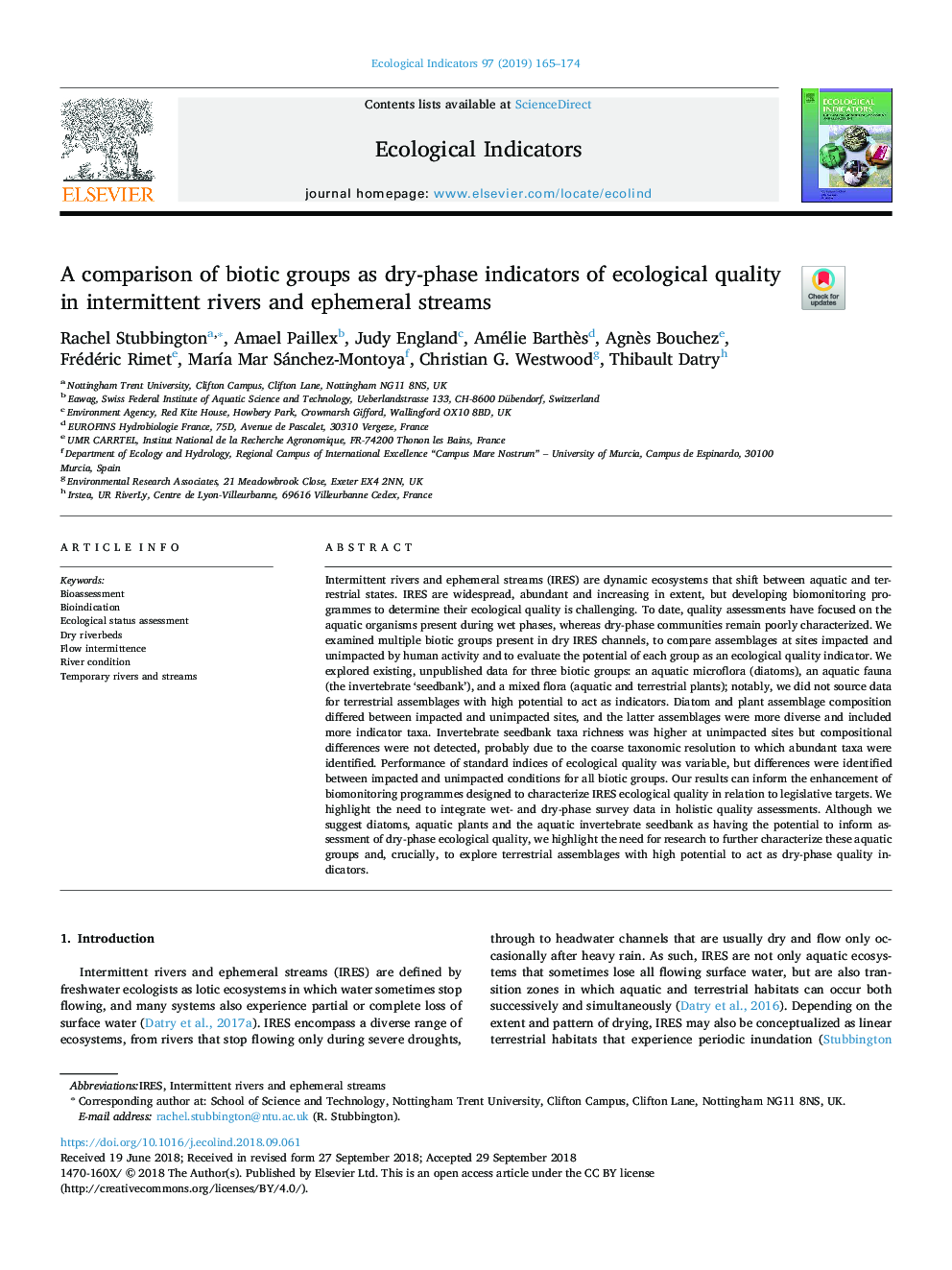| Article ID | Journal | Published Year | Pages | File Type |
|---|---|---|---|---|
| 11010280 | Ecological Indicators | 2019 | 10 Pages |
Abstract
Intermittent rivers and ephemeral streams (IRES) are dynamic ecosystems that shift between aquatic and terrestrial states. IRES are widespread, abundant and increasing in extent, but developing biomonitoring programmes to determine their ecological quality is challenging. To date, quality assessments have focused on the aquatic organisms present during wet phases, whereas dry-phase communities remain poorly characterized. We examined multiple biotic groups present in dry IRES channels, to compare assemblages at sites impacted and unimpacted by human activity and to evaluate the potential of each group as an ecological quality indicator. We explored existing, unpublished data for three biotic groups: an aquatic microflora (diatoms), an aquatic fauna (the invertebrate 'seedbank'), and a mixed flora (aquatic and terrestrial plants); notably, we did not source data for terrestrial assemblages with high potential to act as indicators. Diatom and plant assemblage composition differed between impacted and unimpacted sites, and the latter assemblages were more diverse and included more indicator taxa. Invertebrate seedbank taxa richness was higher at unimpacted sites but compositional differences were not detected, probably due to the coarse taxonomic resolution to which abundant taxa were identified. Performance of standard indices of ecological quality was variable, but differences were identified between impacted and unimpacted conditions for all biotic groups. Our results can inform the enhancement of biomonitoring programmes designed to characterize IRES ecological quality in relation to legislative targets. We highlight the need to integrate wet- and dry-phase survey data in holistic quality assessments. Although we suggest diatoms, aquatic plants and the aquatic invertebrate seedbank as having the potential to inform assessment of dry-phase ecological quality, we highlight the need for research to further characterize these aquatic groups and, crucially, to explore terrestrial assemblages with high potential to act as dry-phase quality indicators.
Related Topics
Life Sciences
Agricultural and Biological Sciences
Ecology, Evolution, Behavior and Systematics
Authors
Rachel Stubbington, Amael Paillex, Judy England, Amélie Barthès, Agnès Bouchez, Frédéric Rimet, MarÃa Mar Sánchez-Montoya, Christian G. Westwood, Thibault Datry,
